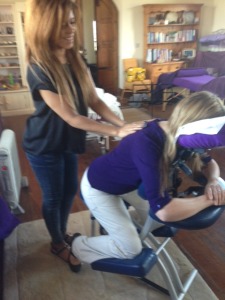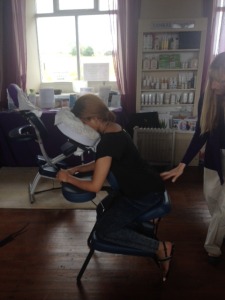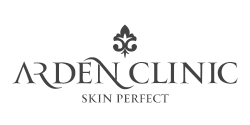Or rubbed your shoulders when you felt tension?
This is quite an instinctive human response for our fingers and hands to hold an area of where pain or strain is experienced.
History
 Acupressure originates from an ancient Chinese therapy to relieve minor ailments dating back 5000 years ago, based on a healing system called Anma. The ancient theory is believed to increase the ‘Chi’ or ‘energies’ through the body’s pathways known as the Meridian lines which are associated with the body’s main organs. When one is dysfunctional, this imbalance can lead to illness.
Acupressure originates from an ancient Chinese therapy to relieve minor ailments dating back 5000 years ago, based on a healing system called Anma. The ancient theory is believed to increase the ‘Chi’ or ‘energies’ through the body’s pathways known as the Meridian lines which are associated with the body’s main organs. When one is dysfunctional, this imbalance can lead to illness.
Movements by the practitioner combines Shiatsu and Anma to create the easy flow of energy through the Meridian lines in a sequence. Using fingers, thumbs, elbows and even knees at certain angles, the sequence promotes blood circulation and nerve responses.
This was further developed in California in the 80’s by David Palmer who is known for putting this wonderful therapy on the map. He formed a special chair to enhance the comfort of the treatment for both the practitioner and receiver. This treatment is widely known as ‘Seated Acupressure’.
The treatment aims to use the Meridian lines and focuses on 60 pressure points on the upper part of the body.
 The treatment aims to use the Meridian lines and focuses on 60 pressure points on the upper part of the body.
The treatment aims to use the Meridian lines and focuses on 60 pressure points on the upper part of the body.
Acupressure is specifically designed for the back, neck, shoulders, the arms, hands and scalp.
The technique is non-invasive and is administered over clothing without creams and oils.
Percussion and Tapotement movements are used covering the erector spinae muscles to awaken the patient after a relaxing treatment.
A 20 minute session is required to feel toned, refreshed and invigorated.
Acupressure responds well to:
- Promoting health
- Insomnia
- Musculo-skeletal problems
- High blood pressure
- Digestive disorders
- Stress
- Depression
- Migraine
